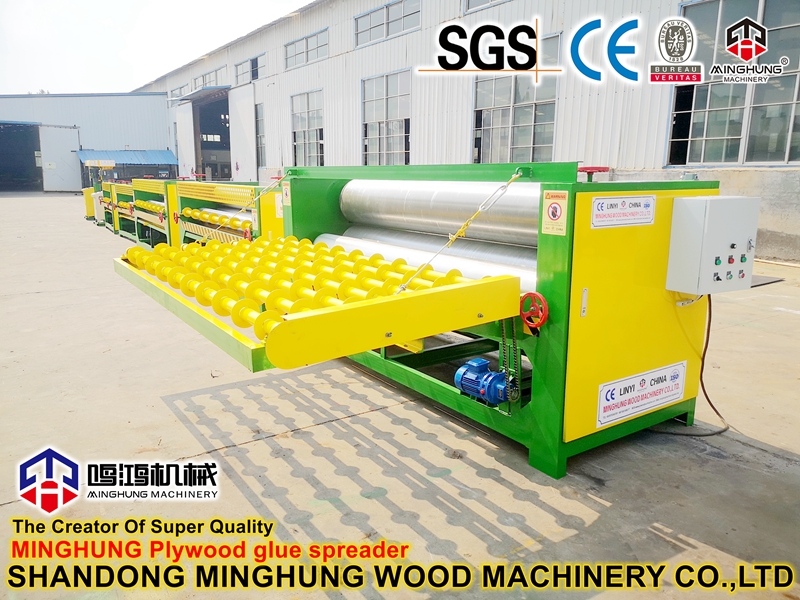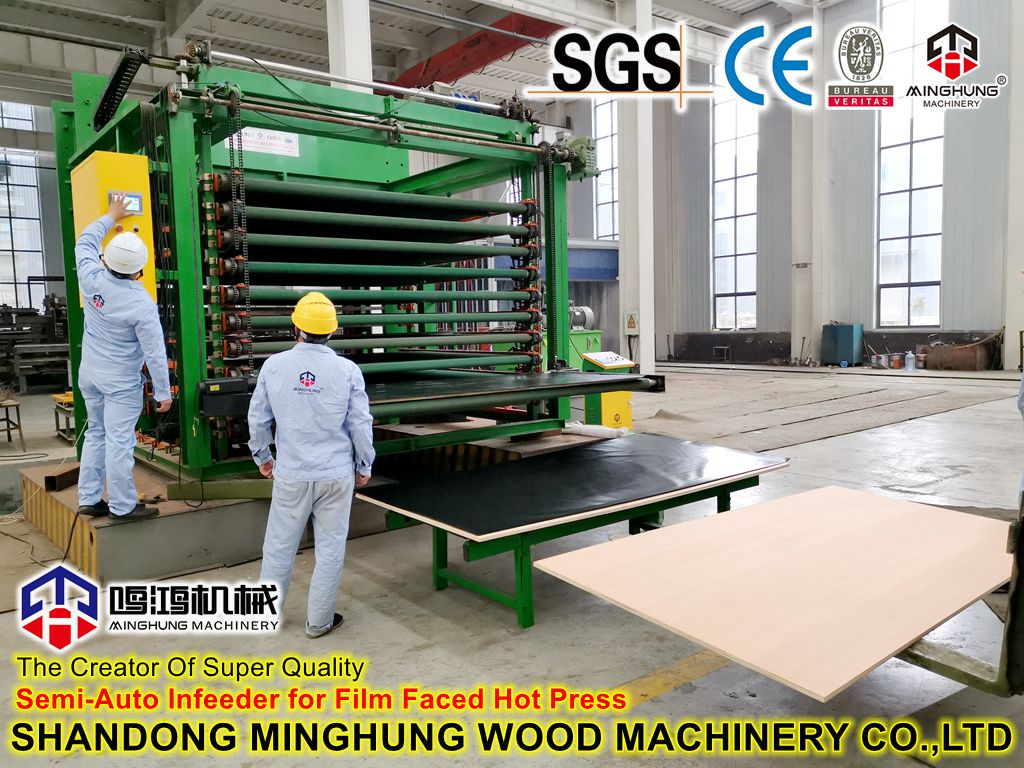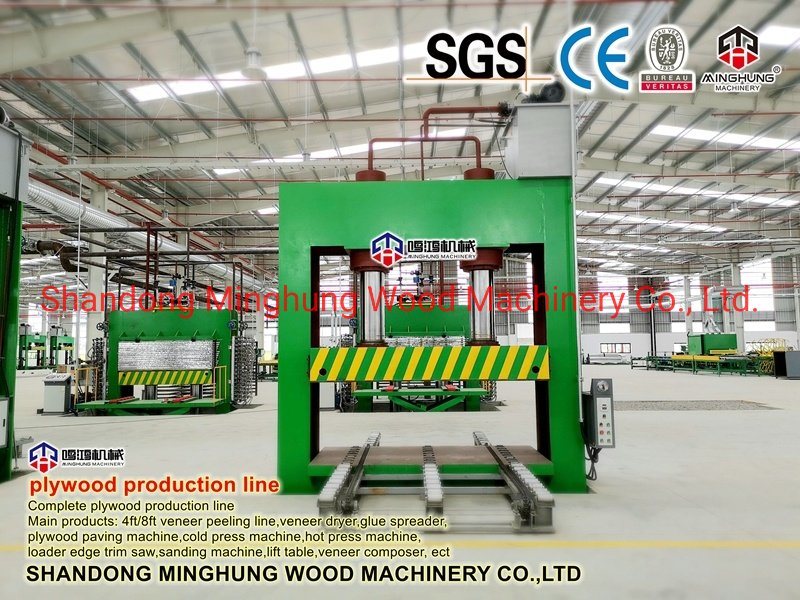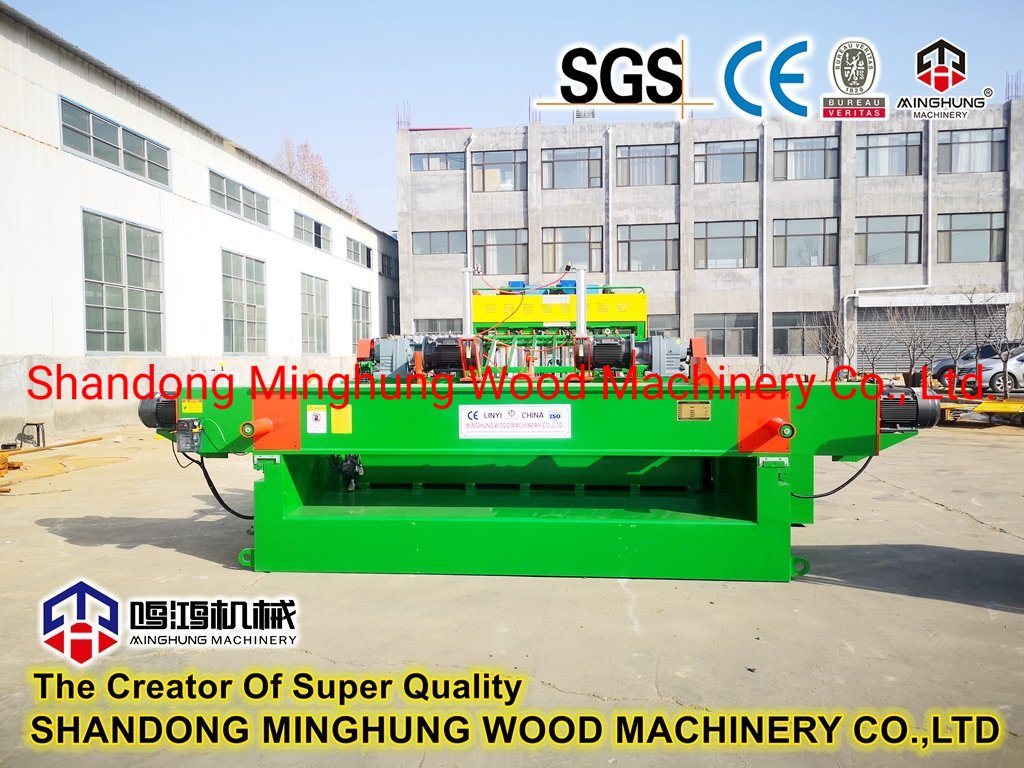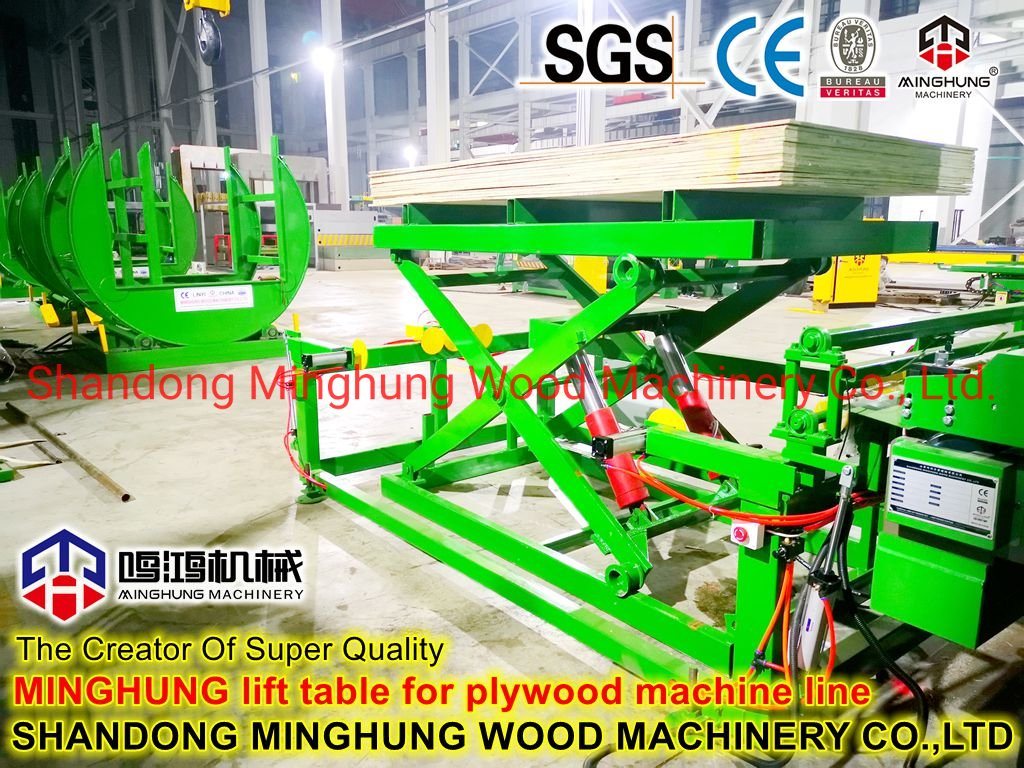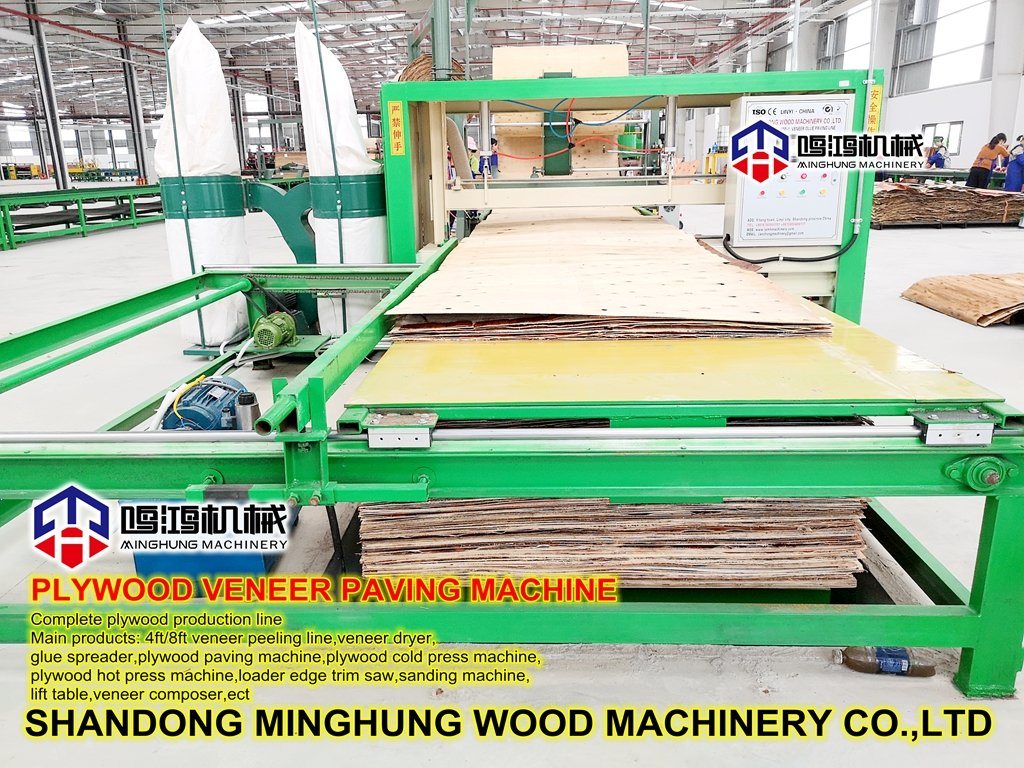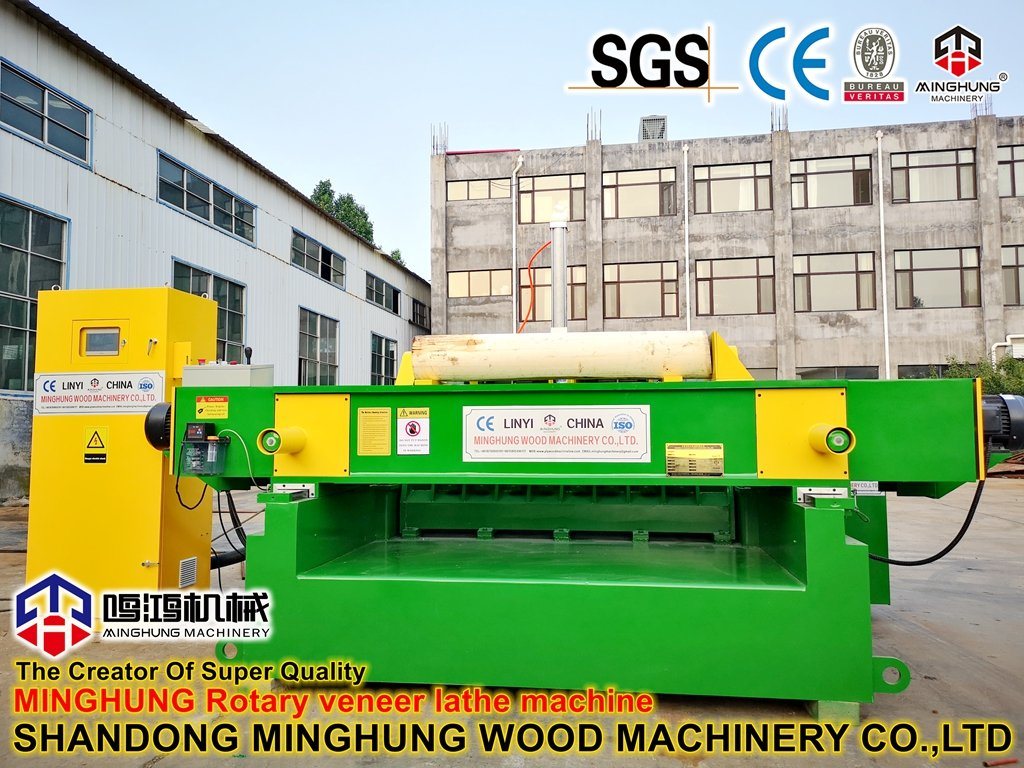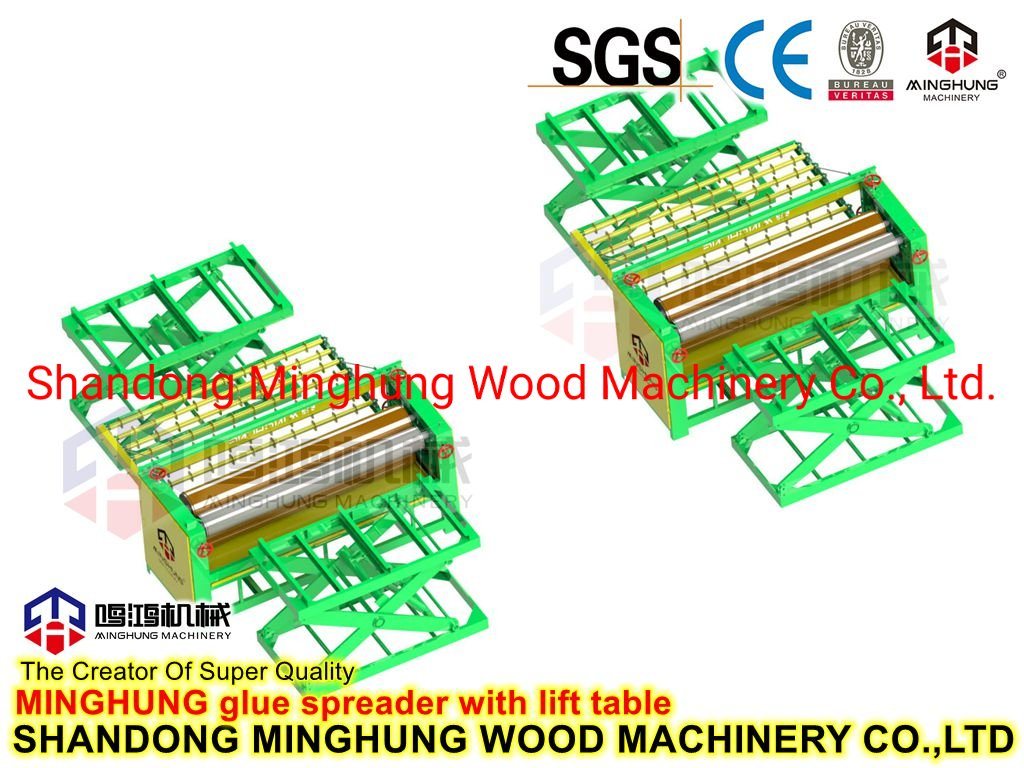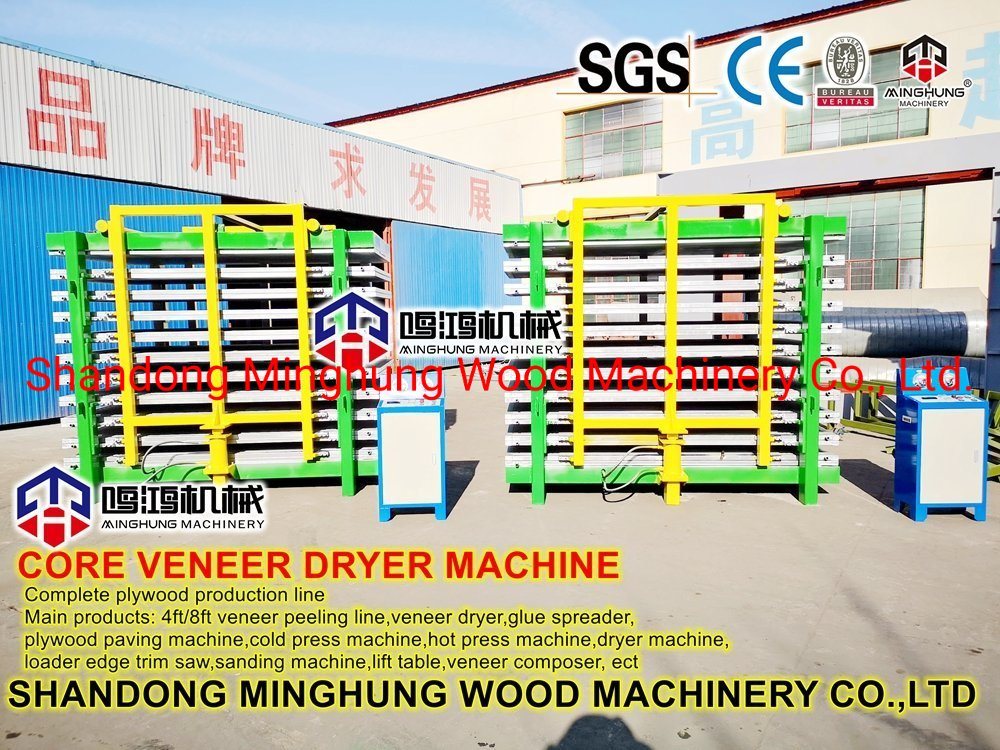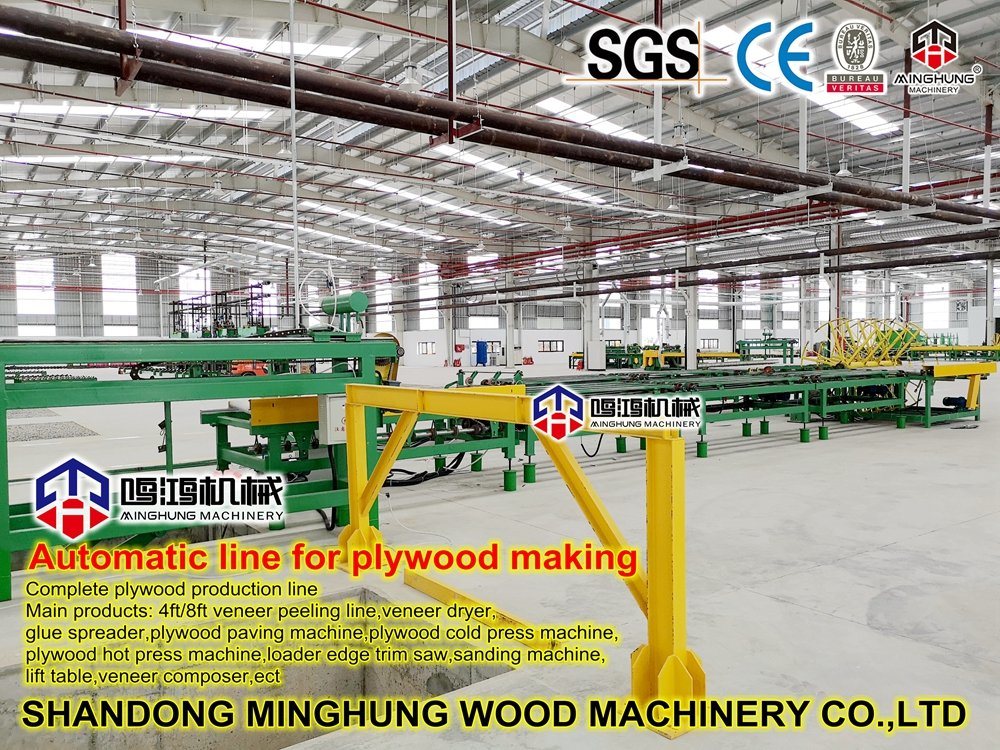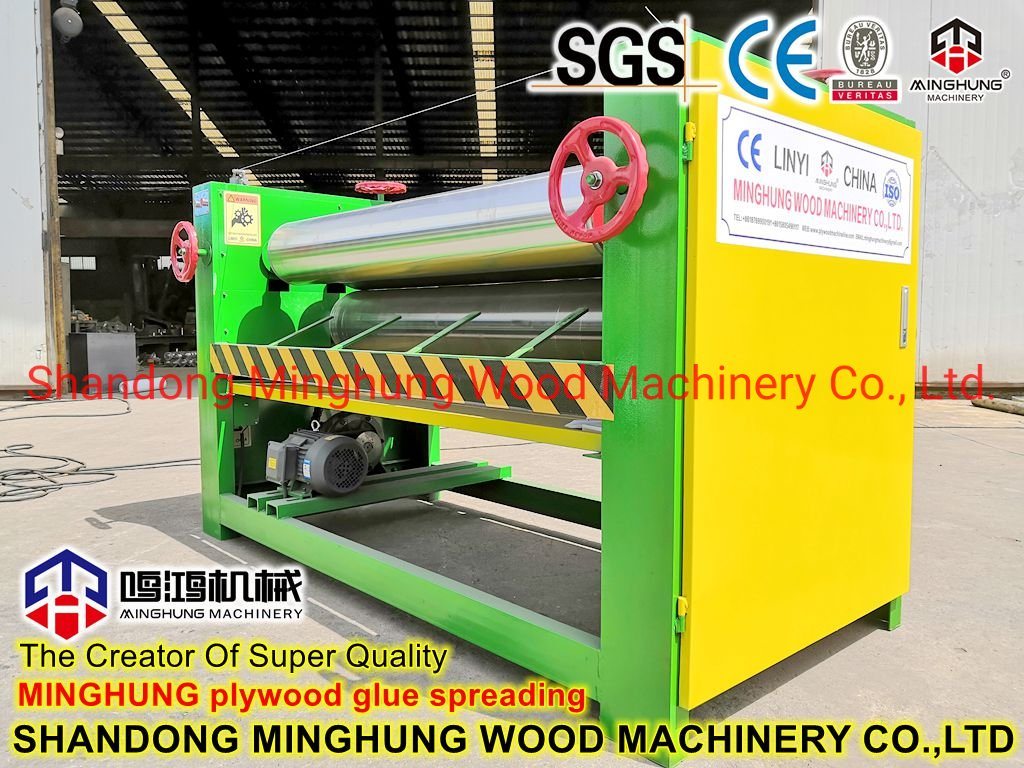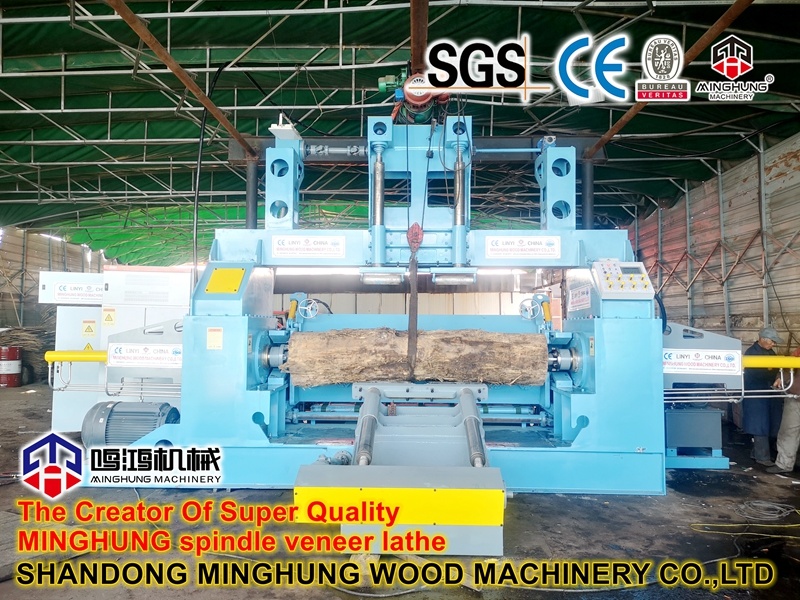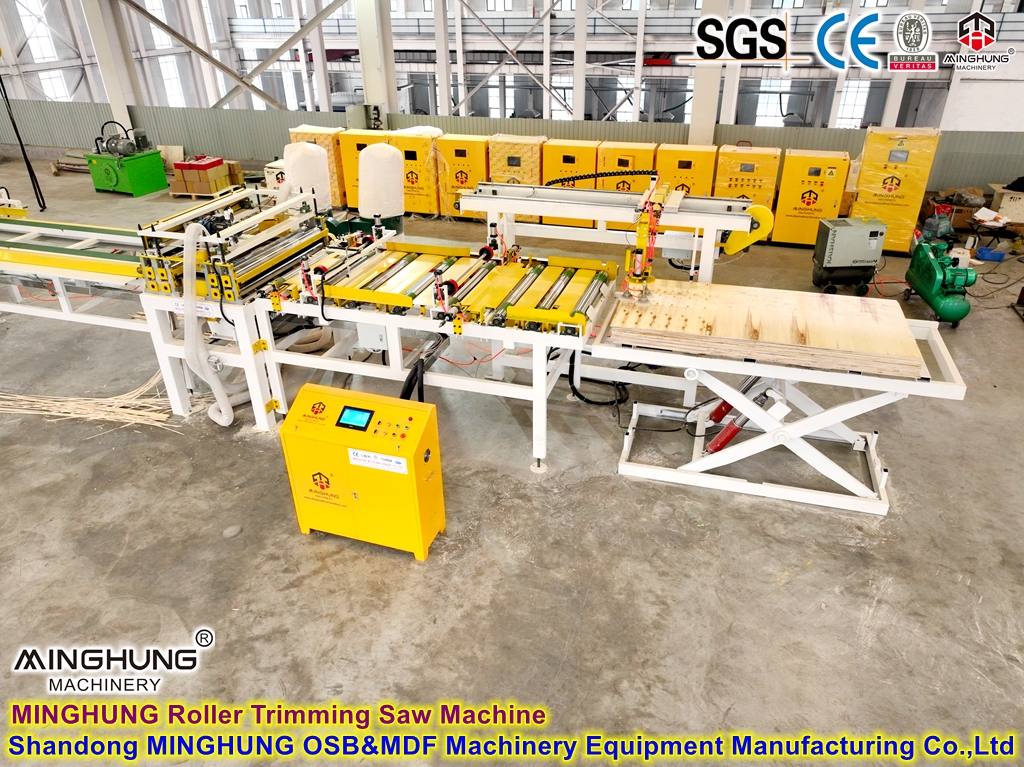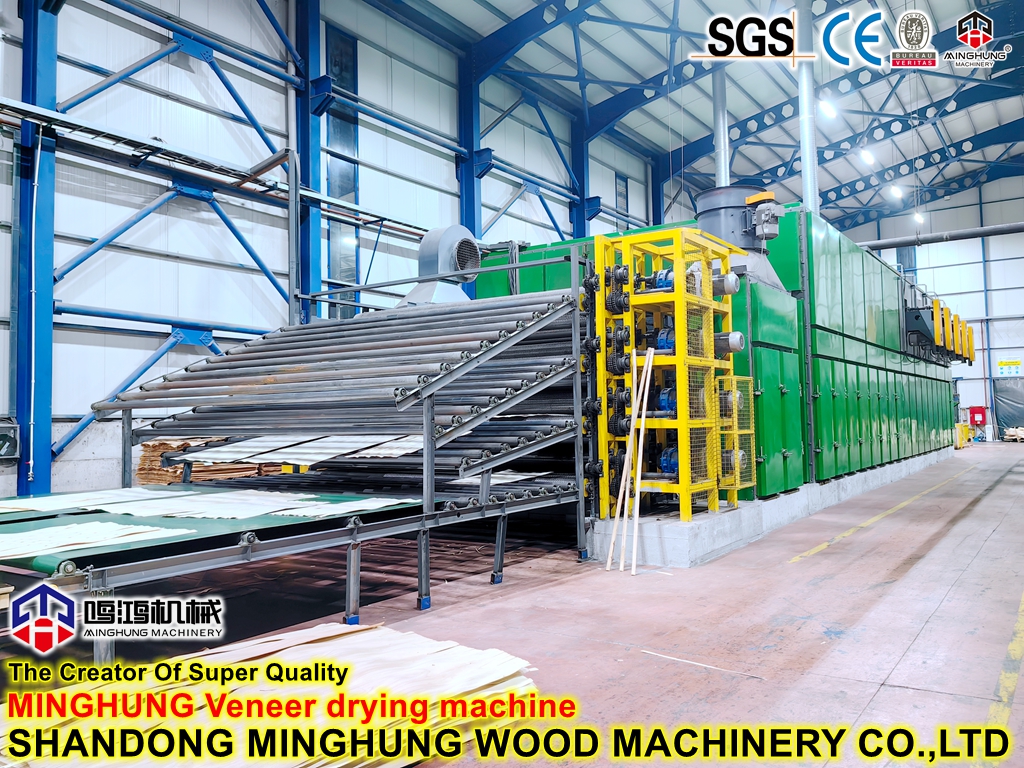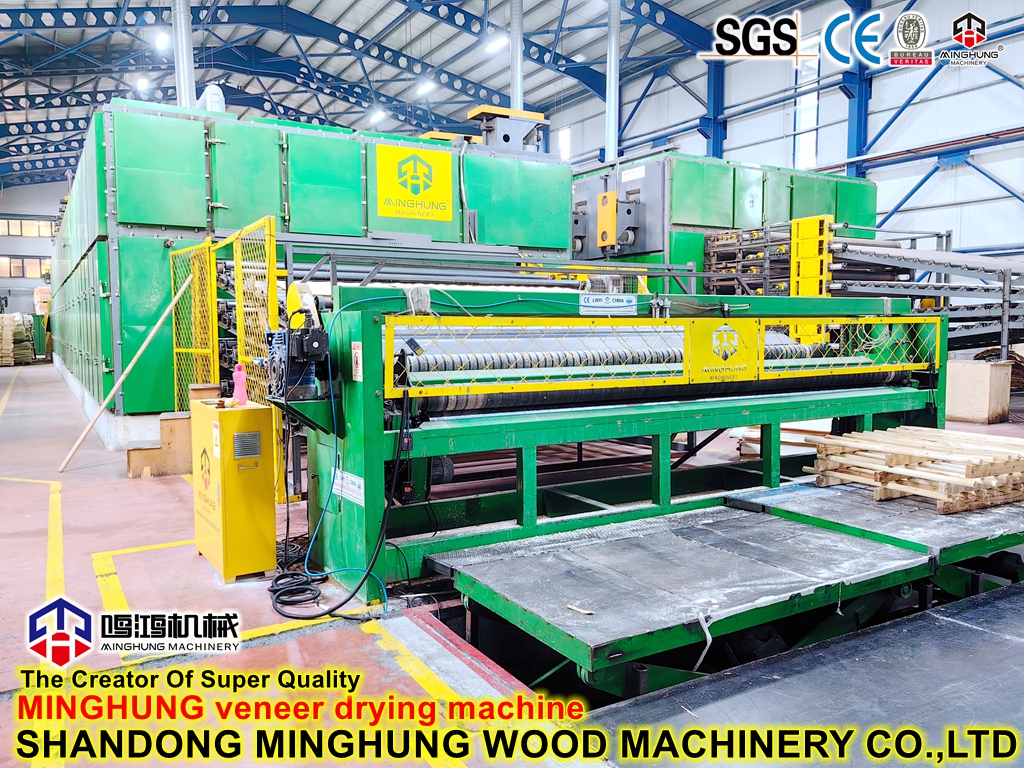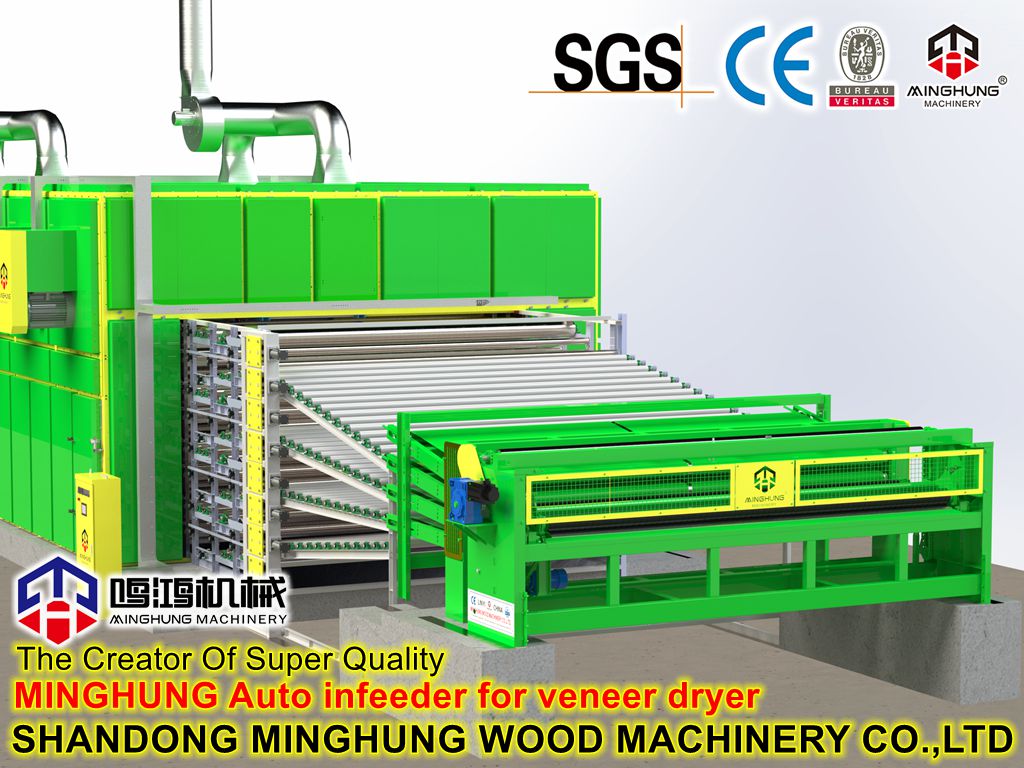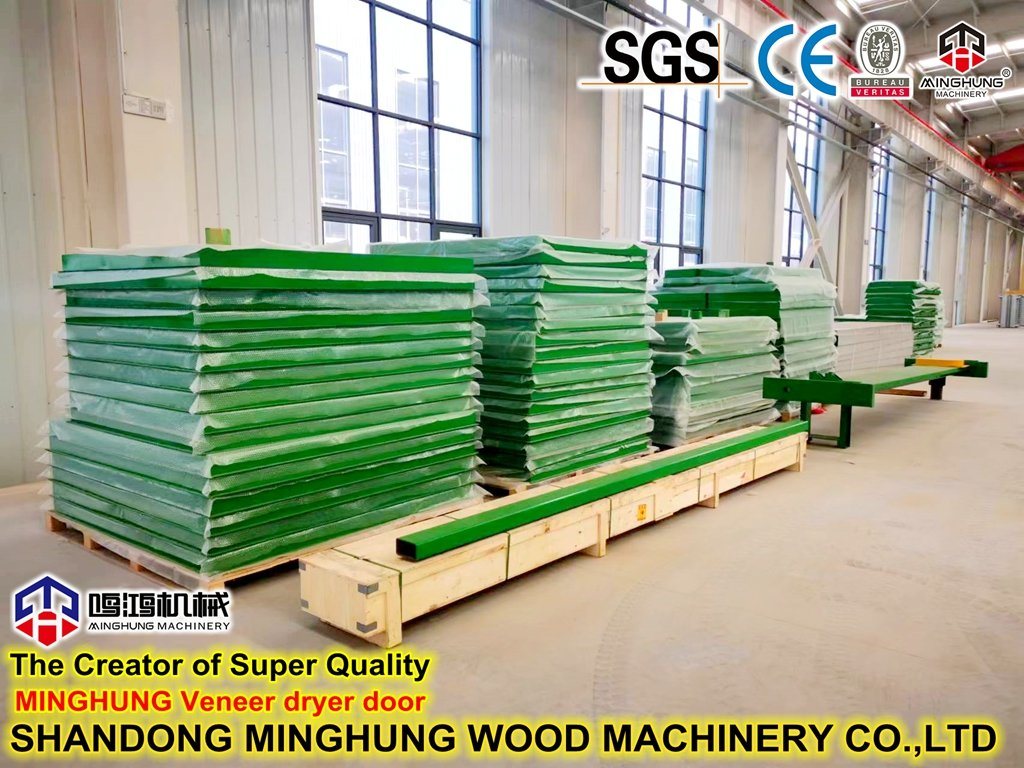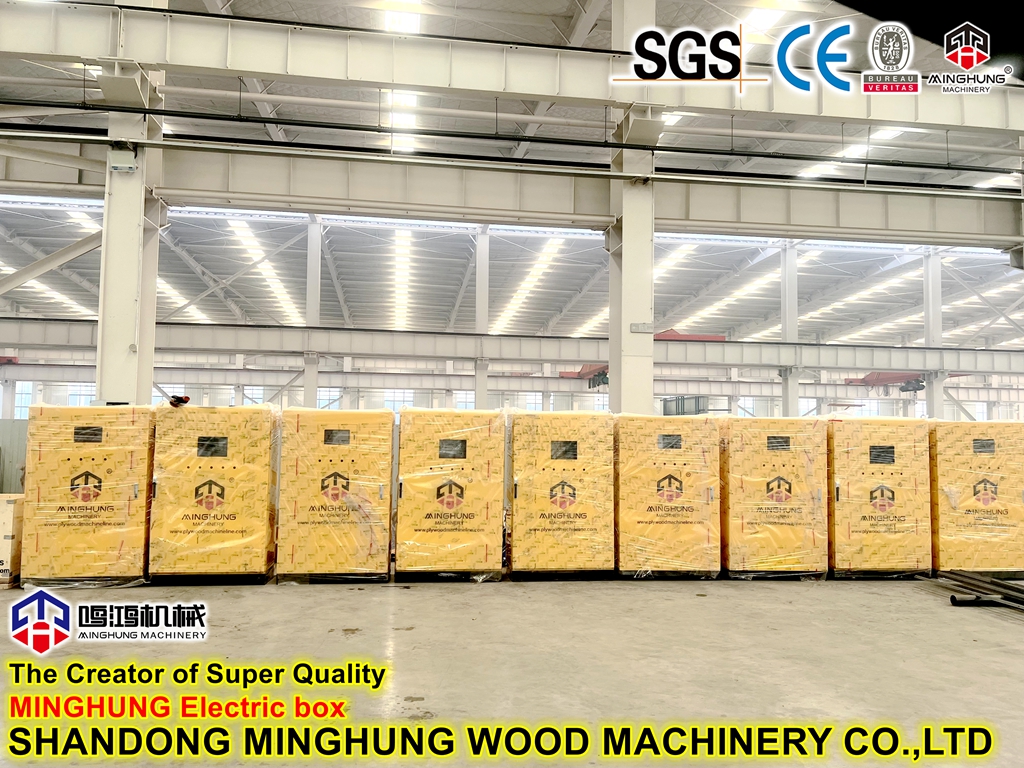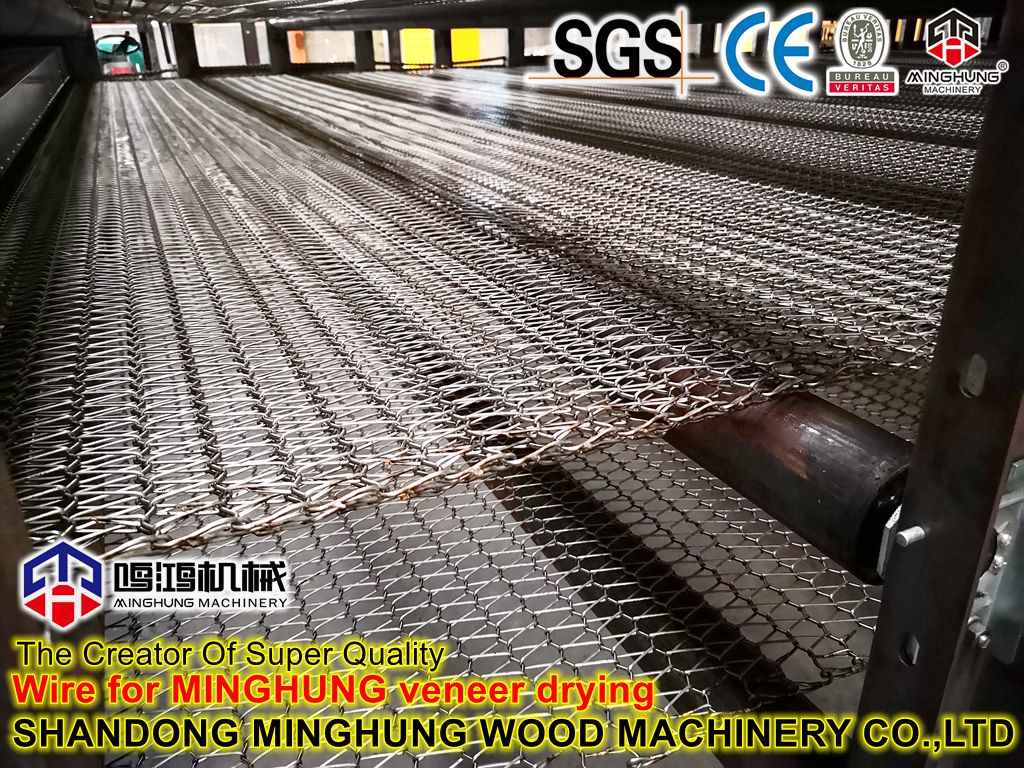The core working principle of this system is "Adaptive Intelligent Drying Based on Real-Time Moisture Content Feedback," achieving a fundamental leap from traditional "process control" to modern "result control."
1. Real-Time Monitoring & Data Acquisition:
Once the drying process starts, the built-in high-precision moisture sensors continuously and non-destructively monitor the real-time moisture content at multiple key points within the veneer stack.
This data is transmitted in real-time to the Central Intelligent Control System.
2. Intelligent Analysis & Decision-Making:
The control system compares the acquired real-time moisture content data with the preset target final moisture content (e.g., 8% ±0.5%).
Pre-loaded with optimized drying schedules for different wood species, thicknesses, and initial moisture levels, the system automatically determines the current drying phase (e.g., heating, constant rate, falling rate) based on the gap between current and target moisture content and the drying rate.
3. Dynamic Precision Adjustment:
Based on the analysis, the system dynamically adjusts the environmental parameters inside the kiln:
Drying Temperature: Provides the optimal temperature at different stages while ensuring veneer quality.
Ambient Humidity: Precisely controls dehumidification and humidification (if equipped) to adjust relative humidity, preventing cracking or warping due to excessive drying stress.
Airflow Velocity: Ensures uniformity and efficiency in heat and moisture exchange.
This entire process forms a closed-loop control cycle of "Monitor-Analyze-Adjust," ensuring the veneer's moisture content decreases smoothly and uniformly along the ideal curve.
4. Endpoint Determination & Conditioning:
When the system detects that the overall moisture content of the veneer has reached the target range and the internal/external gradient is balanced, it automatically transitions to a cooling or conditioning phase, ending the drying process. This avoids the over-drying or under-drying common in traditional time-based controls, achieving genuine high-precision veneer drying.
Conventional Components
1. Kiln Body / Drying Chamber : To create an enclosed or semi-enclosed, insulated space that establishes and maintains a high-temperature, low-humidity environment for the drying process.
Composition:
Structural Frame: Typically made of steel profiles for primary support.
Insulated Wall Panels: Often sandwich panels (filled with rock wool or polyurethane) offering excellent thermal insulation to prevent heat loss and improve energy efficiency.
Main Door: For loading and unloading veneer carts, requiring a tight seal.
2. Heating System : To generate the heat required for drying; the "heart" of the dryer.
Composition & Types:
Heat Source:
Steam Heating: Steam from a boiler passes through finned-tube heat exchangers (radiators) inside the kiln to heat the air.
Direct Hot Air Furnace: Burns coal, biomass, or gas/oil to produce clean hot air, which is directly introduced into the chamber.
Thermal Oil Heating: Heated oil circulates through heat exchangers to release heat.
Electric Heating: Uses electric heating elements; higher operational cost, often used for small-scale or specific applications.
Heat Distribution Unit: Such as radiators or heat exchangers, responsible for efficiently transferring energy from the heat source to the air inside the kiln.
3. Air Circulation System : To force air movement inside the kiln, ensuring hot air passes uniformly and at high velocity through the gaps between veneer sheets for efficient heat and mass transfer. This is key to achieving uniform drying across the veneer stack.
Composition:
Circulation Fans: Typically high-volume, high-pressure axial or centrifugal fans.
Fan Motors: Drive the fans.
Baffles / Air Ducts: Guide airflow effectively, minimize dead zones, and ensure even distribution throughout the kiln.
4. Moisture Exhaust (Dehumidification) System : To promptly remove the moisture-saturated air (water vapor) evaporated from the veneers during drying, creating conditions for continued evaporation and precisely controlling the relative humidity inside the kiln.
Composition:
Exhaust Vents / Ducts: Located at the top or sides of the kiln body.
Exhaust Fans: Provide the motive force for moisture removal.
Dampers / Regulating Valves: Can be manually or automatically adjusted to control the rate of exhaust.
5. Loading and Transport System : To carry the veneer stacks and facilitate easy loading and unloading from the drying kiln.
Composition:
Loading Carts (Trucks): Frames designed to hold layers of veneer.
Track System: Laid inside and outside the kiln, allowing carts to be towed or pushed.
6. Control System : Acts as the "brain" of the dryer, directing the coordinated operation of all systems.
Composition (From Basic to Advanced):
Basic Type: Contactors, relays, push buttons, indicator lights for basic start/stop and protection functions.
Conventional Automated Type:
PLC (Programmable Logic Controller): The core control unit.
Temperature & Humidity Sensors: Monitor the kiln environment.
Control Panel & Operator Interface: May include a simple text display or touchscreen for setting and displaying basic parameters like drying time and temperature.
7. Conveyor System (For Continuous Roller / Jet Dryers) : In continuous dryers (non-kiln type), this system is used to continuously transport veneer sheets through the drying zones.
Composition: Motors, reducers, chains, mesh belts, or rollers.
High-precision control components
1. High-Precision Moisture Monitoring Unit:
In-Line Moisture Sensors: Typically insertion-type or non-contact (e.g., microwave or RF technology), capable of penetrating the stack to measure internal moisture in real-time. This is the "sensory" foundation for precise moisture content control.
Multi-Point Sensor Network: Sensors are deployed at multiple key locations within the kiln to comprehensively reflect the drying uniformity across the entire load.
2. Central Intelligent Control System:
Industrial PLC (Programmable Logic Controller): The brain of the system, responsible for running complex control algorithms.
HMI Touch Screen: Used for inputting drying parameters (e.g., target MC, species, thickness), starting programs, and displaying real-time drying curves, moisture content changes, and equipment status.
Data Logging & Storage: Records drying data for each batch, enabling quality traceability and process optimization.
3. Precision Environmental Actuators:
Precision Humidity Control System: Includes high-precision steam injection valves or atomizing humidifiers, and proportionally controlled exhaust dampers, enabling fast and accurate regulation of kiln humidity.
High-Stability Heating System: Utilizes PID-controlled heat sources (e.g., gas, steam, electric) to ensure minimal temperature fluctuations.
Variable Frequency Drive (VFD) Fan System: Drives uniform and stable airflow through the stack and intelligently adjusts air volume based on the drying stage, crucial for ensuring uniform drying.
4. Kiln Structure & Loading System:
High-Performance Insulated Kiln Body: Ensures a stable internal environment and reduces energy loss.
Rational Loading Carts & Tracks: Ensure smooth air channels within the stack, creating conditions for uniform drying.
III. Main Technical Parameters
The following are typical technical parameters for such high-end systems. Specific parameters can be customized according to client needs.
Parameter Category | Parameter Item | Typical Specification / Description |
Control Precision | Final MC Control Range | Settable between 5% - 15% |
| Final MC Control Accuracy | ±0.5% - ±1.5% (Depending on species & thickness) |
| Temperature Control Accuracy | ±1.0 °C |
| Humidity Control Accuracy | ±2% RH |
Drying Capacity | Single Load Capacity (Oven-dry) | 5 - 50 m³ (Customizable) |
| Suitable Veneer Thickness | 0.8 - 6.0 mm |
Drying Efficiency | Drying Cycle (Wet to Target MC) | 10% - 20% shorter than traditional time-controlled equipment |
Sensing System | Moisture Monitoring Method | In-line Insertion/Non-contact Multi-point Monitoring |
| Moisture Measurement Range | 5% - 60% (or higher) |
Heat Source Options | Type | Natural Gas, Steam, Biomass, Electricity |
Control System | Core Controller | Industrial PLC + Color Touch Screen |
| Data Function | Drying Curve Recording, Storage, Printing |

